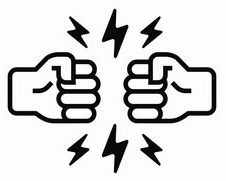What is another name for pressure relief valve?
What is another name for pressure relief valve?
A relief valve or pressure relief valve (PRV) is a type of safety valve used to control or limit the pressure in a system; pressure might otherwise build up and create a process upset, instrument or equipment failure, or fire.
What is the difference between PRV and PSV?
While the term PRV is sometimes used interchangeably with PSV, there is a difference between the two. A PRV opens gradually in relation to the pressure, while a PSV is opened suddenly once the pressure hits a certain level in order to avoid overpressurization and a potential process safety incident.
What are the two types of pressure relief valves?
What are the two basic types of relief valves? There is an automatic relief valve and a one-time relief valve.
What is a relief valve on a boiler?
What does a pressure relief valve do in a boiler? PRVs, also sometimes known as safety release valves, are in place to prevent a buildup of pressure. The valve opens to release pressure when the level becomes too high, and closes again when the pressure has dropped to within a safe range.
What are the two types of pressure regulators compare each types?
Two types are found: The pressure reduction regulator and the back-pressure regulator. A pressure reducing regulator is a control valve that reduces the input pressure of a fluid or gas to a desired value at its output. It is a normally-open valve and is installed upstream of pressure sensitive equipment.
What is set pressure of PSV?
vi) While set pressure cannot exceed the maximum allowable working pressure (MAWP) for single operating PSV, it can exceed the MAWP for one or more PSVs in case of multiple operating PSVs (e.g. 2×50% or 3×50%). Thus, in above example, maximum set pressure can be 20 bar (g) for single operating PSV.
How do boiler safety valves and relief valves work?
How Boiler Safety Valves and Relief Valves Work. Boiler safety valves are activated by upstream pressure. If the pressure exceeds a defined threshold, the valve activates and automatically releases pressure.
How are pressure relief devices used in boilers?
Pressure Relief Devices. Pressure relief devices are used to provide a means of venting excess pressure which could rupture a boiler or pressure vessel. A pressure relief device is the last line of defense for safety. If all other safety devices or operating controls fail, the pressure relief device must be capable of venting excess pressure.
What do you need to know about pressure relief valves?
How to install, inspect, troubleshoot, repair pressure / temperature relief valves or straight pressure relief valves used on heating boilers, steam boilers, water heaters, and even on water pressure tanks. This article explains what TP or pressure relief safety valves are, why they are needed, how they work, and what goes wrong.
What are the different types of pressure relief devices?
The most common types of pressure relief devices are: Safety Valve – This device is typically used for steam or vapor service. Relief Valve – This device is typically used for liquid service. Safety Relief Valve – This device includes the operating characteristics of both a safety valve and a relief valve and may be used in either application.
